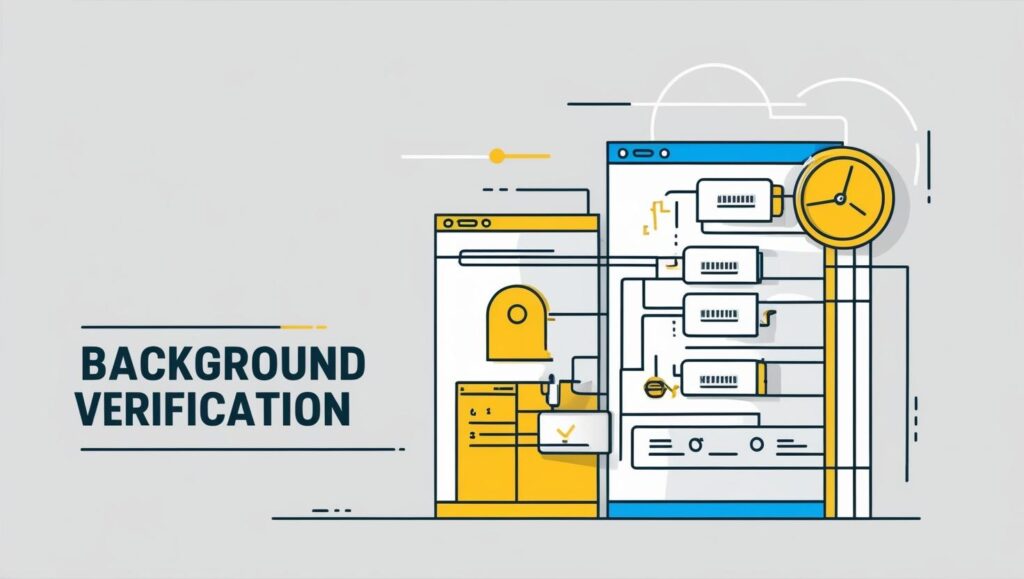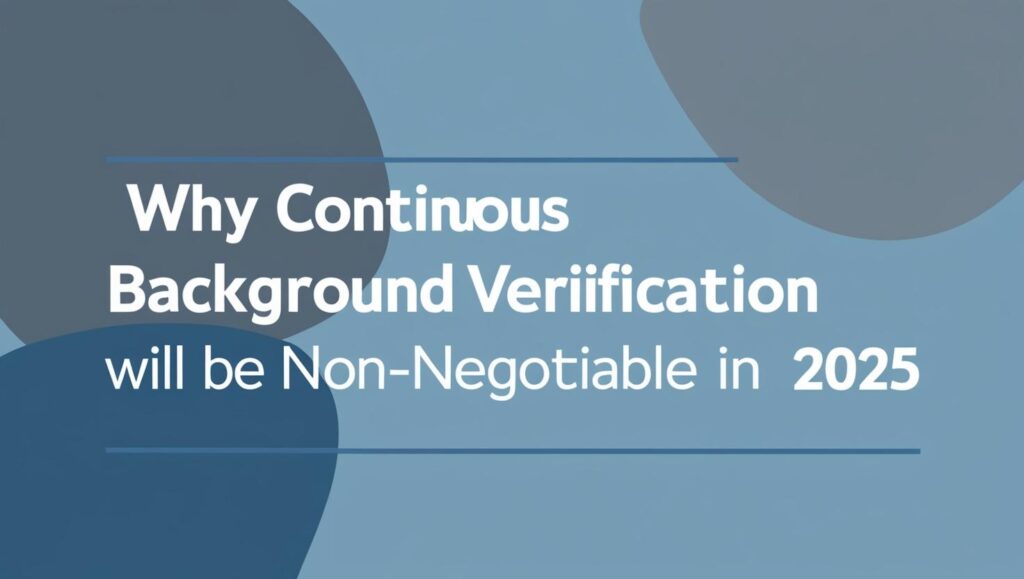In the fast-changing world of today and fast-paced and dynamic workplace and technological environment, continuous background verification is fast gaining importance in organizations’ security compliance. It may become a “best practice,” but by the year 2025, even that will graduate to becoming something non-negotiable for firms of all size and sectors as well. For this reason.

1. The Changing Contours of Risk
The existence of cybersecurity, fraud, and insider risks is a growing problem. Organizations are constantly trying to keep proprietary information, intellectual property, and customer trust out of the wrong hands. A traditional background check prior to hiring only offers a moment in time picture of an individual’s life. Continuous verification persists to verify an individual’s record, so an opportunity is always in the hand of the employer for the early detection of any criminal activity or professional misconduct to take place, enabling organizations to act proactively to prevent breaches that may go costlier later on.
2. Regulatory Compliance
Around the globe, governments and agencies are mandating stricter compliance conditions in every area of sectors and industries. Of these, more stringent rules of control are applied to financial services, healthcare, and technology concerning data security and operational integrity. Continuing to perform background verifications will make such organizations maintain compliance at all times by continuously updating the information about the employee’s credentials, licenses, and legal standing. The requirement of continuous surveillance is also mandatory because failure to comply may incur heavy penalties and damage reputation.
3. Remote and hybrid working
It carries the particular difficulties that are hallmarking employers. In that the workers will be operating from anywhere, it requires quite a lot of trust and responsibility. Continuous back ground verification creates security in form of regular checking on the employees’ background. For example such checks can be able to follow instances of accessing sensitive systems unauthorisedly or professional qualification irregularities.
4. Protection of Brand Reputation
One single instance of an employee’s unethical or illegal activity can be catastrophic for the reputation of the company and, hence, financially devastating. Background verification, as a process, will allow organizations to act preventively in advance, safeguarding their brand image and the trust of their stakeholders. Businesses cannot afford to play a waiting game with reputation management in this hyperconnected world where news spreads like wildfire.
5. Technological Advancements Enabling Feasibility
Advances in artificial intelligence, machine learning, and data analytics make continuous background verification accessible and inexpensive. Automated tools can now process enormous amounts of data in real-time and present actionable insights to employers without the need to sacrifice privacy or efficiency. These tools can be integrated into existing HR systems, thus making implementation easier and less resource-intensive. This technological leap ensures that continuous verification is no longer a cumbersome or expensive process but rather an essential and manageable practice.
6. Improving Workplace Safety
The moral and legal responsibility of the employers lies in ensuring the safe workplace. The continuous verification background helps find individuals who will have a likely cause of harm towards the safety in the workplace like violent behaviour or substance abuse. This minimises the opportunity for a work incident and assures to create a secure workplace environment. Safety assurance raises the level of productivity and the morale of the organization in regard to safeguarding its work-force.
7. Attract and retain high-level talent
Continuity background verification that is incorporated in the policies of the organizations portrays commitment to integrity and safety. In so far as potential employees are concerned, organizations with a reputation for transparency and security would attract them more. Also, employees already employed in organizations are also more likely to stick to the organizations working towards betterment of their security. The process promotes culture about trust and accountability vital in keeping the best workforce in industries competing with each other.
Continual verification of backgrounds requires the organizations to follow in the following ways.
Select the proper tools and partners: Select some reliable background verification platforms that respect data protection legislations locally and internationally. This means selecting a tool that will be easy to use and allow amendments according to your organization’s needs.
Communicate Effectively: Communicate to the employees about the reasons and advantages of continuous verification. The policy should clearly define how data is used and protected.
Legal Compliance: Stay on top of changing laws and regulations. Review your processes regularly for compliance with changes in compliance requirements.
Balance Privacy with Security: Put in place processes that respect employee privacy but also maintain the standards of security. Work towards achieving a balance that guards both the organization and the employees.
Conclusion
Moving into 2025, there is no denying that continuous background verification is important. It’s one of the key tools that help in risk mitigation, compliance, and building trust in this ever-changing world. With this practice, organizations will protect their operations, employees, and reputation as they position themselves for sustainable success in the years ahead. Organizations embracing continuous background verification today will not only meet the demands of tomorrow but will lead the way to set a new standard of operational excellence.
